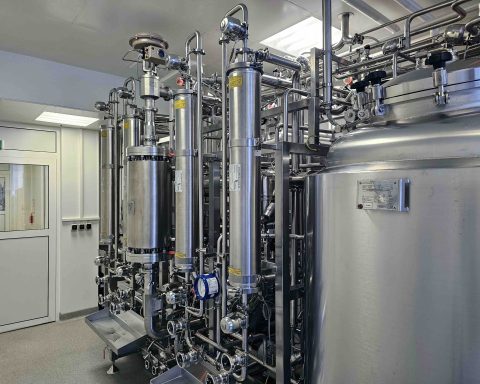For researchers, the challenges are endless and the journey is anything but easy and straightforward. Every year, the pharmaceutical industry of the U.K alone plays a crucial part in developing new drugs that deliver numerous health benefits. Many aim to resolve critical diseases that threaten mankind.
A vast majority of these drugs are expensive and there is no doubt what financial strain they put on the ever-increasing healthcare costs of the federal government as well as the private sector. In addition to that, developing new drugs is a highly costly process and an equally uncertain one.
There are times when drugs that demand billion dollars of investment never make it to the market. Statistics tell us that approximately twelve percent of drugs that undergo clinical trials ultimately gain any approval from the MHRA (Medical and Healthcare products Regulatory Agency of UK).
Here are five things you should know about the intricate processes of research development and medical research supply:
1. Forecasts
For any pharmaceutical developments, the process cannot begin without generating a production forecast. Moreover, forecast serves as a handy tool when planning the recipients, API, packaging components, and organizing the third-party resources.
For all the necessary operations as part of pharmaceutical developments, the forecast is crucial. It also helps an organization deal with their internal and external stakeholders and earning mutual agreement on inventory positions.
2. Multiple Stakeholders
Pharmaceutical companies in the process of development have to work with more than one stakeholder, including the MHRA, government, and academic researchers for identifying new approaches and advancing regulatory science, patient advocacy groups, etc.
It is imperative to form these alliances and partnerships so that the entire research ecosystem can focus on delivering new effective and safe medicines to larger populations of patients.
3. More Patient Involvement
For pharmaceutical companies, it is now imperative to involve patients more in the decision-making processes if they wish to stay ahead of the curve. We are now a more connected world and we have a barrage of online communities and health trackers to aid us.
We now see patients more empowered than ever before and a good step for pharma companies is to give their patients a voice. Like every other DIY trend, DIY medicines are on the rise too and this only emphasizes how much the patients want the pharma companies to hear their demands while developing new drugs, for more affordability and availability.
Companies now have the facility of creating online platforms where they can seek participants and match them with appropriate clinical trials. This is a two-way benefit as the patients will get more involvement while the pharmaceutical companies will reduce their costs incurred when facing delays in patient search.
Pharmaceutical companies now can do even better by giving equal participation opportunities to patients in decision-making, trials, and drug designs, etc. Since the end product is to benefit the consumers more, it will therefore be great for both parties if drugs have better designs and prioritize maximum patient convenience in a regulated approach.
4. High Tech Distribution
Technological innovation has a major impact on both, the medical research supply chain and also drug development. This large-scale impact ranges from manpower to safety to time and can reduce the development process from years to days.
If pharmaceutical companies use technology wisely, they will save a massive amount of time and cost when the production cycle speeds up and they reach patients faster. Pharma companies can shorten the cycle even more by integrating robotics.
You can already note several companies, such as Denso Robotics, offering their automated services for manufacturing and distribution processes. The use of robots is not uncommon in the pharmaceutical world anymore and they can boost manual labor by assisting with heavy loads, lending support during long and uncomfortable hours of standing and awkward positions.
If you want to have a look at how pharmaceutical companies are using robots, you can see the dispenser aides at work.
5. The Four Stages of Drug Development
Pharmaceutical companies must undergo the mandated processes before they can launch the final sale of their product. As part of a drug’s development, it is important to pass four phases, as regulated by the MHRA. Only when each phase yields satisfactory results as per the MHRA’s standards does the drug earn approval for use.
The four phases include:
- Discovery and development
A drug takes its very first shape in a lab. Every pharma company spends no less than millions of dollars when researching and developing a new drug. Several resources fund a drug’s development, including the government, revenues, grants, and public sector, etc.
- Preclinical research
After the discovery, the second phase is when the drug must undergo preclinical and clinical research. It must have supporting reports linking to its review process. It wouldn’t be wrong to call the second phase a preliminary one as the preclinical research includes drug testing on animals, mainly for safety flags.
- Clinical Research
The third is perhaps the most important phase in pharmaceutical development. If a new drug passes the sending phase, it can go for clinical testing on human subjects.
- MHRA Review
This is the fourth phase of a drug’s development and it includes a review from the primary regulator of the medicine market. It is no hidden fact that drug approvals can take even ten to fifteen years before the MHRA approves after fully documented research and trials, etc.
Final Thoughts
Pharmaceutical development is the process of discovering, researching, designing, and manufacturing a new drug for the intended use for a disease. Medical research supply is a process that includes delivering a mass number of those drugs after approval and the manufacturing process is complete. Both the processes are highly intricate, costly, and lengthy.








